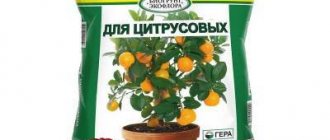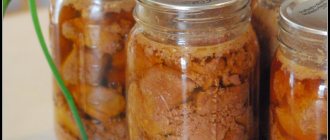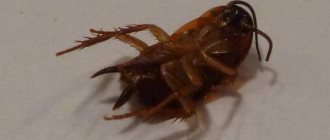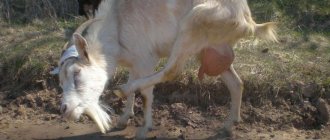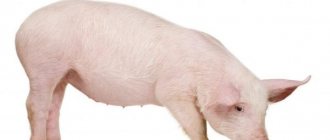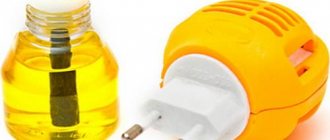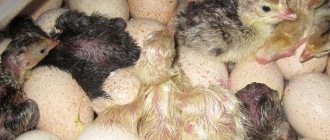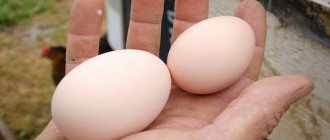Apricot Northern Triumph is a bright representative of domestic selection and confirmation of its limitless possibilities. Thanks to Triumph, the heat-loving crop has become available to gardeners in most regions of Russia.
Apricot "Northern Triumph"
apricot variety “Northern Triumph” can withstand low temperatures
The “Northern Triumph” fruits ripen from late July to mid-August
Description of the variety and its characteristics
Description of the Northern Triumph variety:
- Tree. The height of an adult tree is 4 m. It is powerful, with thick branches and a spreading crown. The leaves are large, slightly pointed, the edges are finely ribbed. The flowers are large and white.
- Fruit. Color – yellow-pink, orange-yellow. There is a red blush of varying brightness. The shape is slightly elongated. Weight – 30-40 g. With good care, the weight of the fruit can reach 50-60 g. The taste is pleasant, sweet, the flesh is juicy. The skin is medium thick and slightly velvety, with a sour taste. The seeds are large and can be easily separated from the pulp. The fruits are securely attached to the branches; if they are not ripe, they do not fall off even during strong winds. The seeds taste similar to almonds.
Northern Triumph flowers have much longer pistils than stamens. When spring comes too early, flowers may lack pistils - this happens due to a shift in natural timing and a lack of heat.
Main agrotechnical characteristics of the Northern Triumph variety:
| Characteristics | Parameters/description |
| Productivity | 60 kg or more |
| Ripening time | last ten days of July - early August |
| Precociousness | Fruiting - in the 4-5th year after planting |
| Frequency of fruiting | There is a lean season every 3-5 years |
| Pollination | self-fertile |
| Frost resistance | high |
| Resistance to diseases and pests | high |
| Drought resistance | weak-medium |
| Duration of fruiting | 20-40 years |
Description of culture
The external parameters of the apricot variety are necessary for the gardener to properly plan the site. The height of the tree and the spreading of the crown affect the placement of fruit crops. This variety has a spreading crown, and the height of an adult tree is 4 m.
The branching is average, the skeletal branches and the tree trunk are thick.
Attention!
When marking the garden, you should take into account the area required for the growth and nutrition of the apricot.
The tree is actively developing. The leaf blades are large, their edges are pointed. The flowers are large and white. The pistils are much longer than the stamens. In years with early spring, flowers are formed without pistils. Scientists explain this fact by a shift in natural timing and heat deficiency.
The fruits are slightly elongated, the weight of one saplet is 30-40 g, but with regular care it reaches 50-60 g. The color of apricots during the harvest period is yellow-pink, the taste is sweet.
Like most northern varieties, the fruits are similar to cherry plums. The skin is slightly pubescent and of medium thickness. The pulp is juicy and can be easily separated from the large seed. Apricots hold tightly to the tree, and even in strong winds they do not fall off.
Advantages and disadvantages of the variety
Northern Triumph is able to bear fruit in areas with harsh winters and short summers - this is the main feature and advantage of the variety. Its other advantages:
- High precociousness. The tree quickly begins to bear fruit. Already in the 4th year, after planting, the tree produces 4-5 kg of apricots.
- Excellent taste characteristics. Apricots with tender and juicy flesh have a pleasant taste.
- High frost resistance. Tolerates frosts down to minus 40 °C. Provided the temperatures are stable.
- No tendency to shedding. The fruits are held firmly on the branches.
- Disease resistance. The variety is especially resistant to fungal diseases.
- Self-pollinating. It does not need pollinators - it bears fruit completely alone.
- Decorative. The tree looks very beautiful during the flowering period.
If pollinating varieties grow nearby, the yield of Northern Triumph increases. Apricot varieties such as Best Michurinsky and Amur are suitable as pollinators.
The gardener provides a video review of the Northern Triumph variety:
Flaws:
- Skeptics believe that Triumph does not have large enough fruits.
- There is also an opinion that the fruits of this variety make insufficiently tasty preparations.
- The most serious drawback is the risk of flower buds freezing.
- Irregularity of fruiting. The tree has “empty” years.
- Does not tolerate sudden temperature changes.
- Does not tolerate prolonged drought well, as the roots are located close to the surface.
History of selection
The Triumph Northern apricot variety was bred by Soviet scientist A. N. Venyaminov. The apricot varieties “Red-cheeked” and Trans-Baikal “Northern Ranniy” were chosen as breeding samples. From one, Triumph Northern received a larger size and pleasant taste of fruits, and from the other, greater yield and resistance to severe frosts were obtained.
Initially, the designated apricot variety began to be grown in the Black Earth Region, and over time it spread to other regions of Russia, including the Urals and Siberia.
Apricot is excellent for growing in the Urals and Siberia
How does the landing take place?
When planting Triumph northern apricot, it is important to provide the seedling with a comfortable and nutritious environment. In order for the tree to take root successfully, it must be planted correctly. Along with the usual method of planting seedlings - in holes, there is another option - planting on hills.
According to Zhelezov, Baikalov and Chuguev
If the root collar of the seedling ends up in the ground, the plant will rot and die. No less dangerous are situations when the bottom of the trunk ends up in water - for example, during snow melting. In a humid environment, wood rots, food does not reach the roots, and the tree dies. Amateur gardeners, covering apricots with roofing material for the winter, sprinkling them with earth or humus, contribute to the death of the tree.
Famous gardeners Zhelezov, Baikalov and Chuguev proposed an alternative method of planting apricots that prevents them from rotting:
- Instead of a planting hole, a hill is made - an embankment of soil mixture. It is prepared from turf soil, compost, humus, coarse sand - all in equal parts. Manure and peat are not used.
- They are ramming the hill. Its height is 0.5 m, diameter is 2 m.
- A depression is made at the top of the hill. Its depth is 1/3 of the length of the roots of the seedling. A couple of buckets of water are poured into the hole.
- Prepare another 2-3 buckets of soil mixture.
- Place the seedling in the hole, holding it so that the roots are straightened, and cover it with earth - up to the root collar. Holes and furrows for watering are not needed.
- The slopes are leveled so that there is a gentle slope from the trunk - no more than 45 degrees relative to the surface.
- To secure the walls of the hill, grass is sown - for example, bentgrass will do.
- The distance between neighboring trees on hills is 4-5 m.
It is important to correctly orient the seedling to the cardinal points. Nurseries put marks on the “south” side of the trunk - it should face south. If you mix it up, the tree will not take root well and may die.
How to plant and grow this variety on your site
Planting the Northern Triumph variety is very simple - you can use either a ready-made seedling purchased in a special store, or plant a seed that quickly germinates. But the apricot will not bear fruit well if you choose the wrong place for planting it and do not properly cultivate the soil.
It is better to plant a tree in the spring, when the plant can adapt to its new conditions. 14-20 days before planting, you need to dig a hole, the width of which will be at least 70 cm, depth - more than 60. If you plan to plant several trees, you must maintain a distance between each - 5 m.
It is necessary to lay a layer of gravel chips at the bottom of the pit, and also make sure that there is a mixture of clay and sand in combination with peat. Everything is thoroughly mixed and, when planting, poured over the drainage. After immersing the rhizomes in the ground, you need to add the mixture again. You can also perform a mulching procedure, which will help retain moisture in the soil.
It is necessary to use fertilizers. In order for the Northern Triumph to bear fruit well, horse manure is used, as well as phosphates, nitrogen and potassium fertilizers. Each mixture must be applied according to the following recommendations:
- manure - no more than once a year;
- phosphates - 2 times a year, before and after flowering;
- nitrogenous fertilizers – 3 times a year (before and after flowering, as well as after harvesting);
- potassium-based fertilizers - before the appearance of fruits for their development.
Read also: Beneficial properties of Macadamia for human health
Apricot variety Northern Triumph needs potassium fertilizers before fruit appears
Definition of deadlines
Apricots are planted mainly in the spring - before sap flows and buds begin to bloom. It is important to take into account the risks of return frosts and postpone planting. It is recommended to plant apricots no earlier than the soil warms up to +5...+10°C.
Conditions suitable for planting usually arise in late April-early May - during this period the seedlings are planted. Moreover, you cannot take it out of storage in advance - so as not to wake up ahead of time.
Selection and preparation of a landing site
Optimal characteristics of a site for planting apricots:
- good lighting, lots of sun;
- absence of drafts and cold wind;
- south side of a structure or fence;
- absence of standing water during rains and snowmelt;
- occurrence of groundwater - no closer than 2 m from the surface;
- neutral soil reaction, pH level 6-7;
- southern slopes with an inclination angle of 10 degrees.
If the area is flat, you need to make a hill or hill. If necessary, deoxidize the soil by adding lime - from 0.35 to 0.6 kg per 1 sq. m. m, depending on the degree of acidity.
Planting material
Tips for choosing a seedling:
- The best age is 1-2 years. Such seedlings take root better, grow stronger and more productive, with good immunity.
- The ideal time to buy is autumn. Even if planting will be done in the spring, it is better to buy planting material in the fall - then you will be sure that the seedling was stored in appropriate conditions.
- The best place to buy is a specialized nursery or store.
- It is advisable to buy seedlings with a tightly packed root system. The ideal option is in a container.
- The root system of a seedling, in volume, should be twice the size of the crown.
- There should be no damage to the bark, no traces of fungus or rot.
How to save a seedling until spring:
- The roots of the seedling are immersed in a mash made from mullein and clay.
- Wrap the roots in burlap and then in a plastic bag - it should not be tightly closed.
- The roots should not be dry - they are checked periodically. Store seedlings in the basement at temperatures from 0 to +5 °C.
- Another option is digging in the seedling. It is insulated with straw, spunbond, etc.
Landing algorithm
Standard algorithm for planting an apricot seedling in a planting hole:
- Dig a hole 1-2 weeks before planting. The depth of the pit is 70 cm, diameter is 60 cm.
- Drainage is laid at the bottom of the hole - made of gravel mixed with branches.
- The fertile layer removed when digging a hole is mixed with humus (2 buckets), lime (1 kg), superphosphate (500 g), ammonium nitrate (200 g), potassium salt (100 g). The latter can be replaced with ash (200 g). The mixture is thoroughly mixed so that the roots of the plant do not get burned from contact with fertilizers.
- The prepared mixture is poured into the hole and covered to prevent water from entering.
- When the time comes for planting, the seedling, having straightened its roots, is placed on the top of the hill. A peg is placed nearby.
- The seedling is positioned so that the upper roots rise above the soil horizon, and when falling asleep, a hill 10 cm high is obtained. If groundwater is close - 40-50 cm. From the root collar to the soil there should be 5-7 cm.
- A ditch is dug around the mound. Pour 2 buckets of water into it - it should not leak towards the trunk and the roots should not be washed away. This planting will protect the root collar from water during rains and melting snow.
- After watering the planting, sprinkle the hole with mulch.
Place for apricot Triumph of the North
Apricot is a southern plant that responds positively to a warm and bright habitat. Therefore, the southern or southwestern side of the garden, protected from the winds, is suitable for Northern Triumph. It should not be a lowland where cold air sinks. A small elevation, possibly artificially created, is a favorable factor for the growth and fruiting of an apricot tree.
Suitable soil for a fruit plant is light, with good air and moisture permeability, neutral or slightly alkaline with an acidity pH of 6–7.
The appropriate soil acidity level for apricot is pH 6–7.
The root system of the Northern Triumph is not very large - it is buried approximately 40 cm into the ground. Groundwater should not be located closer than this distance.
How to care for apricot?
Northern Triumph inherited its low maintenance requirements from “Red-cheeked”. This variety does not cause any special worries. Care comes down to standard measures - watering, fertilizing, pruning.
The main task of the gardener is to create comfortable conditions for the tree at the initial stage of life, and subsequently maintain its healthy condition, protecting it from frost in winter and from pests and diseases in summer.
Correct and systematic watering
Northern Triumph tolerates dry periods well and is watered infrequently. And if there are good rains, then watering is skipped. The main thing is that the tree trunk circle is loosened so that oxygen reaches the roots and rainwater is well absorbed.
During drought, apricots are watered rarely, but generously. 2-3 waterings are enough. Approximate watering schedule:
- after flowering;
- during fruit growth;
- after harvesting.
The rate and frequency of watering varies depending on age. The older the tree, the less often the watering and the higher the volume. Until 4-5 years old, the tree is watered frequently, without waiting for the soil to dry out. The watering rate for a young tree is 30 liters, for an adult tree - from 50 liters per 1 square meter. m.
When, how and what to feed?
Northern Triumph is fed three times a season. In spring, nitrogenous fertilizers are needed to increase green mass, during flowering and budding - potassium and microelements, in autumn - potassium and phosphorus to increase frost resistance.
Terms and rates for applying fertilizer to Northern Triumph apricots:
| Period | Fertilizer and dose |
| Spring. Before or immediately after bud break. |
|
| Spring. Budding and flowering. |
|
| Autumn. |
|
If ash is added, it must be fresh. The one that has been exposed to rain or stored in a humid environment has no nutritional value and does not alkalize the soil, but only loosens it.
To apply fertilizer, a groove is dug around the perimeter of the crown or several holes 15 cm deep are made. Having distributed the fertilizer evenly, the holes or groove are watered and then leveled.
Pruning methods and timing
Pruning is the most difficult part of maintenance. Before you start pruning, you have to study its order and pattern. There are several types of pruning:
- Sanitary. Conducted in spring or autumn. Remove dry, diseased and damaged branches. Cut branches are burned, as they may contain pests and pathogens.
- Formative. Aimed at forming a beautiful and comfortable crown. It is carried out from the moment the seedling is planted.
- Supportive. Aimed at the active formation of young shoots and flower buds. It is carried out simultaneously with sanitary pruning. All branches, except skeletal ones, are shortened by 1/3.
We also recommend reading the article on how and when to prune apricots.
Apricot grows faster than all other fruit trees and needs more frequent pruning. Mature trees have to be pruned especially often. When the annual growth decreases, the branches are cut back to the wood formed 2-3 years ago.
Features of apricot pruning:
- Apricots are pruned annually - in the spring, before the buds open, usually in mid-April.
- The branches are cut into rings so that there are no stumps left. The apricot crown needs annual thinning.
- Remove branches directed towards the ground, growing inside the crown, diseased, old, interfering with each other.
- Young shoots, strong and straight, are left, and crooked and weak shoots are cut off.
- You should not remove more than a quarter of the crown volume so that pruning does not become a shock to the tree.
- Shoots that do not bear fruit - shoots - are removed; too much effort is spent on them.
Preparing apricots for winter
Measures to prepare apricots for winter are not limited to applying potassium-phosphorus fertilizers and moisture-recharging irrigation; you also need to insulate the tree and protect it from rodents. Sheltering work begins after the daytime temperature drops to 0 °C.
Young seedlings are completely covered with agrofibre. Mature trees are insulated as follows:
- First, the trunks and skeletal branches are whitened with garden lime.
- They tie the trunk with spruce branches, lowering it down with needles.
- To protect the roots from freezing, the tree trunk circle is covered with dry straw, hay, and the same spruce branches. In this case, the base of the trunk is not covered - they retreat from it by 15-20 cm.
It is forbidden to wrap the trunks with film or cloth - during a thaw they will retain moisture, causing the bark to warm up.
Features of watering
In order for the tree to develop well, it needs to be watered generously throughout the spring and June-July. The best method is to pour water into a shallow ditch dug around the perimeter of the crown. At a time, about 20–30 liters of water are consumed per 1 m2 of area for a young tree and up to 40–50 liters for an adult. By August, watering is reduced or stopped altogether (otherwise young branches begin to grow actively, which will not have time to get stronger before the winter cold).
A shallow ditch is dug around the tree for watering.
Growing from seed
Gardeners can grow Northern Triumph from seeds by receiving free planting material. Growing order:
- Choose a beautiful, large, fully ripened fruit. The bone is removed from it.
- Soak the bone in water for 3-4 days. Then transfer it to a container filled with moistened sand or moss.
- The container is covered with plastic film with holes made in it.
- When the seed, having cracked, sprouts, it is transplanted into the soil to a depth of 7 cm.
Planting in the soil is carried out in summer or spring. The optimal time is May. The soil is periodically moistened and then mulched with humus or peat. Over the summer, a seedling can grow 1 m, and after a year it can be transplanted to a permanent place or used for grafting onto a rootstock.
Reproduction
If you wish, you can grow Northern Triumph yourself. There are two ways to do this: cuttings and budding .
Cuttings
In the spring, cuttings are taken from the tree. Before planting, the lower cut must be kept in a growth stimulator, then choose a place for planting and dig in the shoot.
During the first month, the seedling is watered regularly, preventing the soil from drying out. After a year, you can transfer the young tree to a permanent place of residence.
Budding
Grafting by eye is carried out in mid-summer.
- Several small, 2–3 cm, cuttings are cut from a young tree branch and kept in water.
- On a healthy fruit tree (rootstock) intended for grafting, the lower part of the trunk is cleaned and a “tongue” cut is made at a distance of 5–7 cm from the base.
- Insert the cutting into it, making sure that it exactly coincides with the cut, and secure it with a special tape.
The cutting bud should be free. For successful wintering, the grafted cuttings should be wrapped in paper. In the spring, the upper part of the rootstock is cut off and the covering material is removed.
Diseases, pests and control and prevention measures
The variety is quite resistant to diseases and pests, but prevention should not be neglected. Recommended preventive measures:
- Cleaning and destroying fallen leaves. They are not sent to compost - it is better to burn them, as they may contain fungal spores and pest larvae.
- Sanitary pruning followed by destruction of cut branches. After combustion, a valuable fertilizer is obtained - ash.
- Autumn digging of the soil - fungal spores, beetles, larvae raised to the top die from frost.
- Whitewashing trunks and installing hunting belts. Prevents pests from entering.
- Autumn tying of trunks with roofing felt - against rodents.
- In autumn and spring - stripping the damaged bark, followed by treating these areas with a 3% solution of copper or iron sulfate.
- In early spring - preventive spraying with fungicides and insecticides.
Common diseases of apricot Northern Triumph:
| Diseases | Symptoms | How to treat? | Prevention |
| Clusterosporiasis | The leaves become covered with brown spots, in place of which holes appear over time. There are cracks on the shoots with gum leaking out. | Spraying with Bordeaux mixture 1% or copper sulfate 1%. Spray the buds in the spring and spray the branches in the fall when the leaves fall. In rainy summers, treatment is every half month. During budding, spray with Horus (3 g per 10 liters of water). | Affected branches and fallen leaves are trimmed and burned. |
| Moniliosis | The petals turn brown and dry out. Then the leaves and shoots dry out, there are cracks in the bark, and the fruits rot. | Spray with copper oxychloride 0.3%, Topsin solution 0.1% or Skor 0.02%. | During pruning, cover the sections with garden varnish. The trunks are whitened with lime and copper sulfate. |
| Cytosporosis | The tree withers starting from the top. There are dark spots on the bark. The branches are drying out. The tree is at risk of dying. | Spraying with Topaz, Skor or Cuprozan. | Cutting out dry branches. |
Common pests of apricot Northern Triumph:
| Pests | Description | How to fight? | Prevention |
| leaf roller | The caterpillar, having overwintered in the bark and fallen leaves, eats leaves and buds in the spring. | Spraying with Decis, Inta-vir, Entobacterin. | Digging up tree trunk circles. Cleaning the bark with a wire brush. Whitewashing of the trunk and skeletal branches. |
| codling moth | Having hatched in the second half of summer, the caterpillars eat the pulp of the fruit. | Spraying with Entobacterin (per 10 l - 60-100 g) or 0.2% Chlorophos. | Destroying fallen leaves and digging up the soil. |
| Aphid | Sucks juices from shoots and leaves. The foliage curls and fades. | During the period of dormant buds - 3% Bordeaux mixture, during blossoming - 2%, during the growing season of shoots - 1%. Also sprayed with Karbofos 0.3%. | Fighting anthills. Planting calendula. |
Preparing for winter
Before the winter cold, the tree trunk is subjected to a special treatment that provides protection from rodents and sunburn throughout the winter and spring - ordinary whitewashing. You need to whiten both the main trunk and thick branches.
The method for preparing a solution for whitewashing is to mix 0.5 kg of lime with 10 liters of water. You can add 2 tbsp. spoons of copper sulfate. Another option: clay, mullein and lime in equal proportions. Apply to wood, stirring the solution constantly.
In addition, you need to carefully (to a depth of no more than 10 cm) dig up the soil around the tree and wrap the trunk with material that allows air and water to pass through. Ruberoid and polyethylene are completely unsuitable for this purpose. Nonwoven materials and spruce branches are suitable. Such measures will protect the root collar and bark above from the cold winter air.
Harvesting and processing
Harvesting is carried out taking into account the purposes for which the fruits are intended:
- If apricots are harvested for food or drying, they must be at the stage of consumer ripeness.
- If the fruits are to be transported and sold, then they are collected at the technical stage and have a corresponding beautiful color, but at the same time their pulp is quite dense, even hard.
Harvesting is carried out only in dry weather. The ideal time for collection is 10-11 am, when the dew has dried. Or evening - after 17 o'clock. Fruits picked in cool weather are inferior in taste to those picked in favorable weather.
In extreme heat, harvesting is also not done - fruits collected at high temperatures quickly deteriorate. There is no need to rush into harvesting - the apricots are securely held on the branches.
The main purpose of apricots is fresh consumption. The fruits are stored in the refrigerator for 7-10 days. If there are a lot of apricots, they are processed - dried, made jam and confiture, prepared compotes, made wine, tinctures and liqueurs.
How to collect and preserve fruits
Fruits that have reached the technical stage of ripeness are suitable for storage and transportation . Ripe berries are subject to immediate processing. How does the harvest proceed at technical ripeness:
- Apricots are picked by hand in dry weather.
- The fruits are carefully inspected and only healthy and undamaged berries are sent for storage.
- To store them, take a container (plastic or wooden box) and line each stacked row with paper.
- Store in a room with 50–70% humidity and a temperature not exceeding 10 °C. In this state, the fruits can be stored for up to 3 weeks. To increase shelf life, the room temperature should be around 0 °C.
In addition to storing fresh fruits, apricots can be frozen or dried.
Reviews about Northern Triumph
★★★★★
Evgeny I. Novosibirsk region. Triumph should have been bearing fruit for 10 years already, during which time there were only two good harvests.
Generally very few fruits grow. The tree doesn’t really bloom or bear fruit – maybe I’m missing something. ★★★★★
Alina O., Chekhov. The tree is strong and tall, bears fruit well.
The first harvest was 3 kg. Now he produces 2-3 buckets of apricots. The tree is ideal for our region, the branches and buds successfully survived frosts of minus 37. The fruits are quite large - 40 g each. Compared to southern apricots, they are, of course, not as sweet, but for the Moscow region they are very good. Hide
Add your review
The creators of Northern Triumph did not exaggerate at all when they gave the variety such a pretentious name. This productive and frost-resistant apricot has become a real find for the middle zone and Siberia. The variety, without requiring special care, supplies its owners with fruits with high taste and commercial characteristics almost without interruption.
0
0
Copy link
Characteristics
The characteristics of the variety include
- Edibility and taste of the seeds, reminiscent of almonds. Cooks value apricots for this quality.
- Precociousness. The first fruiting occurs 5 years after planting.
- Self-pollinating. Pollinators are not required for Triumph Northern apricot; the variety bears fruit well when planted alone.
- Resistance to major crop diseases, especially fungal ones. The variety does not require frequent preventive treatments. Can be quickly cured when problems arise.
- Apricot Triumph Northern demonstrates good adaptation abilities of the bark to temperature changes. But it should be noted that the kidneys are more susceptible to cold and can freeze.
The lifespan and fruiting life of an apricot is 40 years. Some gardeners consider this characteristic to be positive, while others would like a more durable variety.
Drought resistance, winter hardiness
The most valuable characteristic of the Triumph Northern apricot variety for Central Russia is its resistance to frost. Branches of the variety without lesions tolerate frost down to -40° C, but with a constant index. As soon as sudden temperature changes begin, annual shoots may freeze. Then fruiting continues for two or three years.
Buds react worse to low temperatures; their frost resistance is defined as average. Apricot Northern Triumph does not bloom in years with sudden spring frosts. The root system is located close to the surface, so the variety does not tolerate prolonged drought. The winter hardiness of the apricot variety Northern Triumph is considered above average.
Pollination, flowering period and ripening time
Pollinators are not required for this self-fertile variety. You can increase productivity by group planting with Amur and Best Michurinsky apricots. Other varieties whose flowering period coincides with Northern Triumph are also suitable. The tree blooms earlier than other species, the harvest is ready for harvest in the last ten days of July or early August.
Productivity, fruiting
The first harvest is harvested from the tree at the age of 3-4 years. Usually it is 4-5 kg per plant. As apricots mature, the yield constantly increases. The average value for a tree at the age of 10 years is 60-65 kg per plant.
Reviews from gardeners about the Northern Triumph apricot indicate instability of fruiting. Fruitful years alternate with periods of rest. This is due to the tree’s need to restore its strength. You can extend the fruiting age with proper tree pruning.
Resistance to diseases and pests
For gardeners, the resistance of apricot varieties to fungal infections is important. It shows good resistance to most diseases. In years with unfavorable weather conditions, he may suffer from cytosporosis, verticillium, monilliosis, and clasterosporiosis.
Advantages and disadvantages
Compared to other varieties, Triumph Northern has many advantages, including:
- Rapid onset of fruiting.
- Taste of fruits.
- Frost resistance.
- Strength of attachment of fruits and flowers.
- Suitability of kernels for food consumption.
- Self-pollinating.
- Disease resistance.
- Decorative appearance of a tree at the moment of flowering.
Gardeners do not have a consensus on the shortcomings. Some are dissatisfied with the size of the fruit, others do not like the quality of the preparations. But more significant disadvantages should be considered the possibility of freezing of flower buds and irregular fruiting.
Trimming
All fruit trees, including self-fertile apricot varieties, need pruning. It is carried out in early spring, in March. But if for some reason the spring time is missed, then pruning can be done just before the cold weather in the fall. When pruning, weak, diseased, broken and growing shoots that thicken the tree are removed. Side branches on skeletal branches are shortened, forming a beautiful crown.
To avoid infection, all sections must be treated with garden varnish or oil paint made from natural ingredients: ocher, red lead. Pruning is a necessary process that keeps the crop in an active state, supporting immunity and allowing it to withstand negative weather conditions and pests.
What is sick?
Like any organism, the Northern Triumph tree can also get sick.
But the practice of gardeners shows that balanced fertilizing, watering and timely pruning enable the variety to successfully bear fruit for more than 20 years.
Among the preventive measures, it should be noted that the garden is prepared for winter.
Advice from the editor: at the end of autumn (November) it is important to paint the trunks and large skeletal branches with lime mortar or a special garden whitewash. It is not done for beauty at all.
This is the main preventive measure against sunburn and frost damage, which are deadly for all stone fruits.
Features of planting columnar apricots
Both apricots and hybrids bred through selection are demanding of light and love the sun. In the absence of such conditions, if fruits are set, they will be in small quantities, and the taste will sharply deteriorate. Trees bloom very poorly in the shade.
You don’t need a lot of space for a columnar apricot, so you can always find a small area where the cold wind does not hit and there are no drafts. It is easy to plant a tree between buildings at a distance of 20-15 centimeters from them, but so that no shadow falls on it. Apricots should not be placed in lowlands, where both melt and rainwater stagnate and cool and humid air accumulates. The tree will be comfortable if you find a place for it at the foot of a gentle slope.
In the southern regions, columnar apricots are planted in open ground in both October and April. In the fall, it manages to take root and get stronger before the cold weather arrives no earlier than December. In the middle zone, trees are planted only at the end of spring or in the first month of summer, since frosts are a frequent occurrence here, and the hydrometeorological center is not able to predict when they will come.
Apricots develop poorly and often get sick in the place where they used to grow:
- tomatoes and peppers;
- raspberries and strawberries;
- potatoes and eggplants.
Such crops are attacked by helicopters and infect fruit trees with fungi. It is very difficult to cope with the pathogen. Apricot seedlings, preferably 2-year-old ones, are placed at a distance of 80 cm-1 m, leaving at least a meter between rows. Trees take root well on loose soils, permeable to moisture, and grow on loams, gray soils and chernozems.
It is advisable to buy seedlings in special nurseries that are located in your area, since the apricots that they sell are adapted specifically to this climate. The height of the tree should be within a meter. It is necessary to check whether the roots bend, whether the seedlings have healthy bark, and whether there is a trace of grafting. You should not buy apricots grown from the seed.
The hole for the tree is prepared in the fall. Both its depth and width should be within 60-70 cm. To prevent the water from turning sour, expanded clay or small crushed stone is poured onto the bottom in a 40 mm layer, after which wood ash or mineral fertilizers in the form of urea, superphosphate or potassium nitrate are added.
The top layer of earth is mixed with humus and sand, placed at the bottom of the hole, a support for the tree is installed nearby and covered, and in the spring:
- Make a hole in which the apricot is planted vertically.
- Pour and compact the soil, leaving a root neck of about 5 cm above the surface.
- A furrow is made along the tree trunk, sprinkled with peat or straw.
- The tree is attached to a support and watered with 2 buckets of warm water.
In order for the columnar plant to take root faster, the roots are soaked in a solution of potassium permanganate or a biostimulant, after which they are shortened a little and dipped in mash made from clay and manure.
Tree care
Triumph Northern is considered an undemanding crop
When caring for it, it is important not to forget about watering, fertilizing, and pruning. If comfortable conditions are created for the plant when planting, it will be enough to follow these general rules of care, insulate it for the winter, carry out preventative measures against pests or deal with them in a timely manner.
Watering
Adult Triumph Northern does not require frequent watering. The tree tolerates short-term drought well
It is important to loosen the soil around the trunk to provide sufficient oxygen to the roots. During periods of prolonged drought, watering is also done infrequently, but abundantly.
During spring and summer, if there is no rain, three waterings are sufficient: during the formation of the ovaries, during the ripening of the fruits, after harvesting the apricots. The watering rate increases with the growth of the tree: from 30 liters to 50 liters.
A young tree needs more frequent, but not as abundant watering. Typically, the plant is watered once a week, provided there is no rain.
It is important that the soil around the trunk does not dry out. For a young tree, 10-30 liters of water is enough
Fertilizers
Northern Triumph needs regular feeding, otherwise the yield will decrease sharply. During the year, the plant is fertilized three times. In the spring, the tree is fed with nitrogen-containing fertilizers - before the appearance of buds, with potassium fertilizers - during the period of appearance of buds and flowering, and with potash and phosphorus fertilizers - in the fall.
With a lack of boron, the pulp of the fruit becomes covered with brown spots, the yield decreases, young branches and leaves grow poorly. To eliminate the deficiency during the growing season, water the tree with a solution of boric acid: one tablespoon per bucket of water.
Plant protection
Triumph Northern needs to be protected from the cold. To do this, potassium-phosphorus fertilizers are applied and the tree is insulated. The plant needs to be insulated when the air temperature during the day does not rise above zero degrees.
Young trees are completely covered. In adults, the trunk and branches of the skeleton are painted. Garden lime is used for whitewashing. This measure protects from the cold and rodents. Then the bottom of the tree trunk to the first knots (trunk) is tied with spruce branches, placing them with the cuts facing up. Having retreated 20-25 cm from the trunk, the roots are insulated: with dry leaves, grass, straw, spruce branches.
Trimming
To regulate the yield, Triumph Northern apricot needs pruning. In young trees, pruning forms a crown. An adult plant is pruned twice a year: in spring and autumn. There are several types of tree pruning, depending on the goals you want to achieve.
- Using sanitary pruning, dried, broken, diseased branches are removed.
- With the help of formative pruning, a beautiful, regular crown is created.
- With the help of maintenance pruning, young branches and flower buds appear.
Pollination
For the self-fertile variety Triumph Northern, a light breeze is enough for pollination. To increase productivity, you can plant cold-resistant varieties of apricots nearby, the flowering time of which corresponds to the period when Triumph flowers appear. Cross-pollination will improve the taste of the fruit.
Possible diseases and their treatment
- Moniliosis. Fruit rot covers the petals, fruits, and leaves of the tree with fungal spores in the form of beige or gray specks. The bark is cracking. The disease is carried by the wind, so it spreads quickly. They are treated with a solution of lime, copper sulfate, and a special liquid “Horus”.
- Verticillium. Fungal disease. The leaves wither, curl, and become covered with brown and yellow spots. Then they dry out and crumble. This happens because the capillaries inside the branch become clogged. The disease negatively affects the quality of fruits and productivity. For treatment, the affected areas are cut out and burned.
- Cytosporosis. Infectious fungal disease of the bark. The bark becomes covered with dark spots, the branches dry out. The tree withers and may die. Special products “Topaz”, “Skorom”, “Kuprozan” will help, with which you need to spray the plant after sanitary pruning.
- Clusterosporiasis. Fungal disease. Brown spots that appear on the leaves turn into holes. Young branches crack. “Horus”, a mixture of copper sulfate, slaked lime, water (Bordeaux mixture), and trimming the affected parts will help.
- Pests. The tree may suffer from caterpillars, moths, leaf rollers, and aphids. “Decis”, “Inta-vir”, “Entobacterin” will help. It is also useful to clean the bark, whiten the trunk, dig up the soil around the plant, and plant marigolds.
Care and planting
It’s worth mentioning right away that planting and growing apricots in mid-latitudes will only be effective if you follow important care rules.
The best way to plant a tree is with seedlings. Experienced gardeners recommend purchasing planting material in specialized stores or at fairs.
When choosing seedlings, carefully inspect them; the roots should be completely covered. Check with the seller whether the seedlings have been in the same container since sowing. This fact will help the seedlings adapt faster to new conditions.
If the roots of the plant are poorly covered, make sure that they do not dry out during transportation.
It is important to choose the right site for planting. This place must have the following characteristics:
the area should be ideally protected from the wind; it is better if this place is sloping and located on the southwestern side of the site; the soil must be loose and have average acidity; the soil surface should not have holes or rifts; It is important that the groundwater lies at a level of at least 2 meters from the soil surface, otherwise the apricot simply will not grow.
Apricot seedlings are planted in pre-prepared holes. Crushed stone and a fertile mixture are poured into such a depression.
When growing apricots, it is important to use staking pegs. The height of such a peg should be about 20 cm
